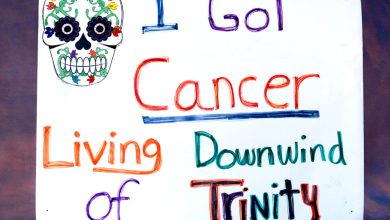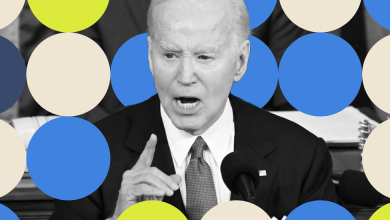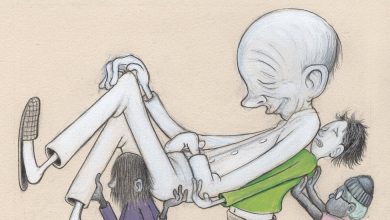We’re Entering a Period of Relatively Low Covid Risk for Kids

Earlier this week, I saw this Times headline skitter across my Twitter feed: “Pfizer Shot Is Far Less Effective in 5- to 11-Year-Olds Than in Older Kids, New Data Show.” An online preprint of a study of 852,384 fully vaccinated children 12-17 years old and 365,502 children 5-11 years old in New York State found that although kids in that 5-11 range were protected “against severe disease,” they weren’t well protected against infection from the Omicron variant.
Per my Times colleagues Apoorva Mandavilli and Noah Weiland, vaccine effectiveness against Omicron infection “dropped sharply to just 12 percent from 68 percent” in younger children, though the vaccine still protected pretty well against hospitalization and severe disease among the elementary school set. Children 12 and over, who received a three-times-larger dose of the Covid vaccine than their younger counterparts, were much better protected from illness.
Considering that I have vaccinated children in the 5-11 age range, I thought I would be more upset by this news, but I found myself experiencing a curious emotional void, and a bit of confusion.
On the one hand, I knew many vaccinated children who caught Omicron when it was whipping through New York City in December and January, so I wasn’t exactly surprised that this little-kid cohort was susceptible.
On the other hand, I was a bit thrown by the news and wanted to unpack it a bit more. “The vaccine’s effectiveness against hospitalization declined to 73 percent from 85 percent in the older children,” my Times colleagues reported. “In the younger children, effectiveness dropped to 48 percent from 100 percent. But because few children were hospitalized, these estimates have wide margins of error.”
To help me sift through my confusion over what to make of this new information, especially at a moment when mask mandates are falling around the country, I called three pediatricians, two of whom specialize in infectious diseases, to ask about these new wrinkles.
First, I want to reiterate the point I made last month when discussing the lack of an approved vaccine for kids under 5: “Covid vaccine efficacy is not a binary ‘works’ or ‘doesn’t work’ — it’s looking more like an ascending scale of protection.” On balance, we should still think of the results of this study (still preliminary) as relatively good news for vaccinated kids 5-11, since hospitalization remained very low for them, even if they did contract the virus.
Aaron Carroll, a pediatrician and the chief health officer of Indiana University, said something similar to me about overall Covid risk for kids. “Fundamentally, we too often think of risk in binary terms: Risk exists, or it does not,” he said. It’s not realistic for the foreseeable future to expect zero risk of Covid for ourselves or our children. While certainly we want to avoid our kids getting it, “If people are doing reasonable things, the parents are vaccinated and boosted, and Covid is becoming low in the community, the absolute risk to kids is pretty low,” even if masks become optional, Carroll said.
We also need to manage our expectations about the vaccine overall. Yvonne Maldonado, a university administrator and a professor in Stanford Medicine’s division of pediatric infectious diseases, said that we need to remind ourselves that, from the beginning, the goal for the public health system in its fight against Covid “was not to prevent every runny nose or respiratory symptom, but to stop hospitalization and stop death and reduce the strain on our health care system.” From that perspective, the vaccine has been quite successful.
Maldonado, who is working with Pfizer on the pediatric vaccine trials at Stanford, also said we should reframe our ideas about the effectiveness of the vaccine. “When we started the trials back in the dark days of spring and summer 2020, we were hoping to have a vaccine that was 50 percent effective,” she said. When the initial results of the vaccine trials reported that the Moderna and Pfizer-BioNTech vaccines were over 90 percent effective, it was seen as something of a miracle. But it also heightened our expectations.
Furthermore, Maldonado emphasized that the most important thing about the vaccines is that they’re safe. Many parents have asked me why kids 5-11 don’t just get the same dose as kids 12-17, or why children 2-4 can’t get approved for the same doses that 5-year-olds are currently receiving. Maldonado said that with bigger doses, there were more side effects in pilot trials, particularly high fevers.
She’s part of the team working on a three-dose trial for children under 5. It looks as if a third dose may be in the future for children 5-11 as well, said Dr. Sean O’Leary, a pediatric infectious disease specialist at the University of Colorado Denver. “We’ve recognized in adults this may be more of a three-dose series anyway, so it may be in the future the third dose is going to be the recommendation,” he said. Many of the common vaccines our children get at their yearly well visits require three or more doses. over a series of years. We just don’t think about it because it’s baked into the system, and most people having children now didn’t see those vaccines developed in real time, as our parents, or perhaps grandparents, did with polio.
Parents of unvaccinated preschoolers may feel particularly anxious in this moment, as masks are coming off, but O’Leary said we’re not even where we were six months ago in terms of risks, because we have a fairly high level of overall population immunity from a combination of infections and a pretty high level of vaccination — as of this writing, 76 percent of the population has at least one dose. Additionally, in much of the country, case rates are lower than they’ve been in months. Of course, Covid still poses some risks to kids, but at this moment, “it’s also in line with a lot of the other risks we as parents deal with all the time and don’t even think about.”
Besides, we can’t pretend that there’s no cost to mask wearing, Carroll said. For one, there’s an actual economic cost — high quality masks are expensive — and many children find them irritating or distracting. It’s too soon to say what the educational costs are, especially for younger children, but a study from Harvard’s Graduate School of Education found, “On average, early educators spent 57 minutes per day introducing and reinforcing hygiene protocols with children,” which included mask wearing and hand washing. That’s almost a full hour a day of education that could have been spent doing something else.
All that said, and even though it seems reasonable to drop mask mandates, we still have to be mindful of immunocompromised children, for whom a case of Covid, or any other respiratory virus like RSV, for that matter, is much more serious. Carroll put it this way: “I don’t want to mask forever, but I have no problem carrying a mask forever.” He added that if he were in an indoor meeting with someone who was immunocompromised, he would absolutely put on a mask for their comfort.
O’Leary cautions against declaring premature victory, even as many of us are happily shedding our masks in many situations. The virus has been unpredictable, and we may need to mask again some day. “Enjoy things while they’re low,” and get your kids vaccinated when they’re able to be, O’Leary said.
Tiny Victories
Parenting can be a grind. Let’s celebrate the tiny victories.
If you want a chance to get your Tiny Victory published, find us on Instagram @NYTparenting and use the hashtag #tinyvictories; email us; or enter your Tiny Victory at the bottom of this page. Include your full name and location. Tiny Victories may be edited for clarity and style. Your name, location and comments may be published, but your contact information will not. By submitting to us, you agree that you have read, understand and accept the Reader Submission Terms in relation to all of the content and other information you send to us.





